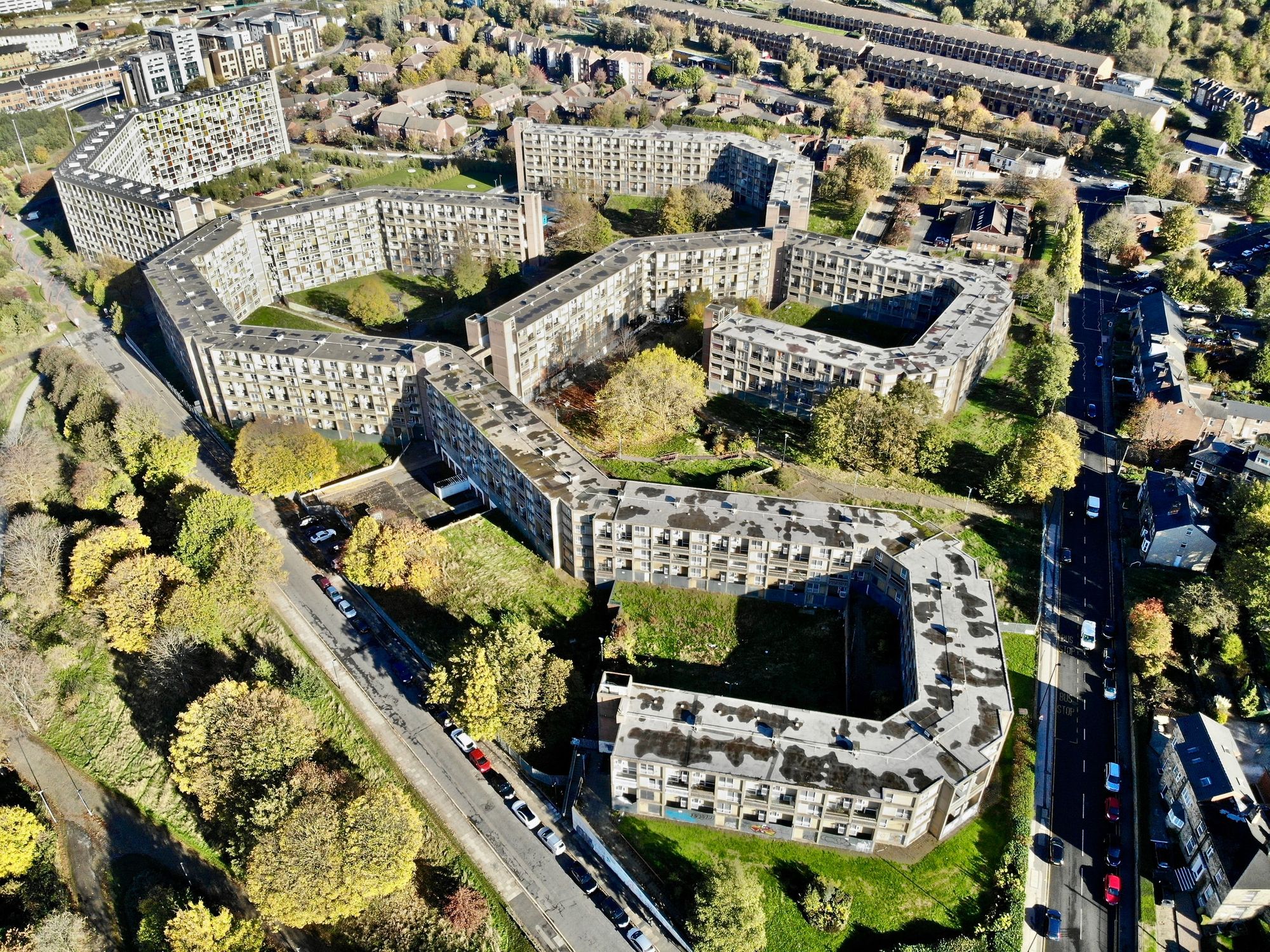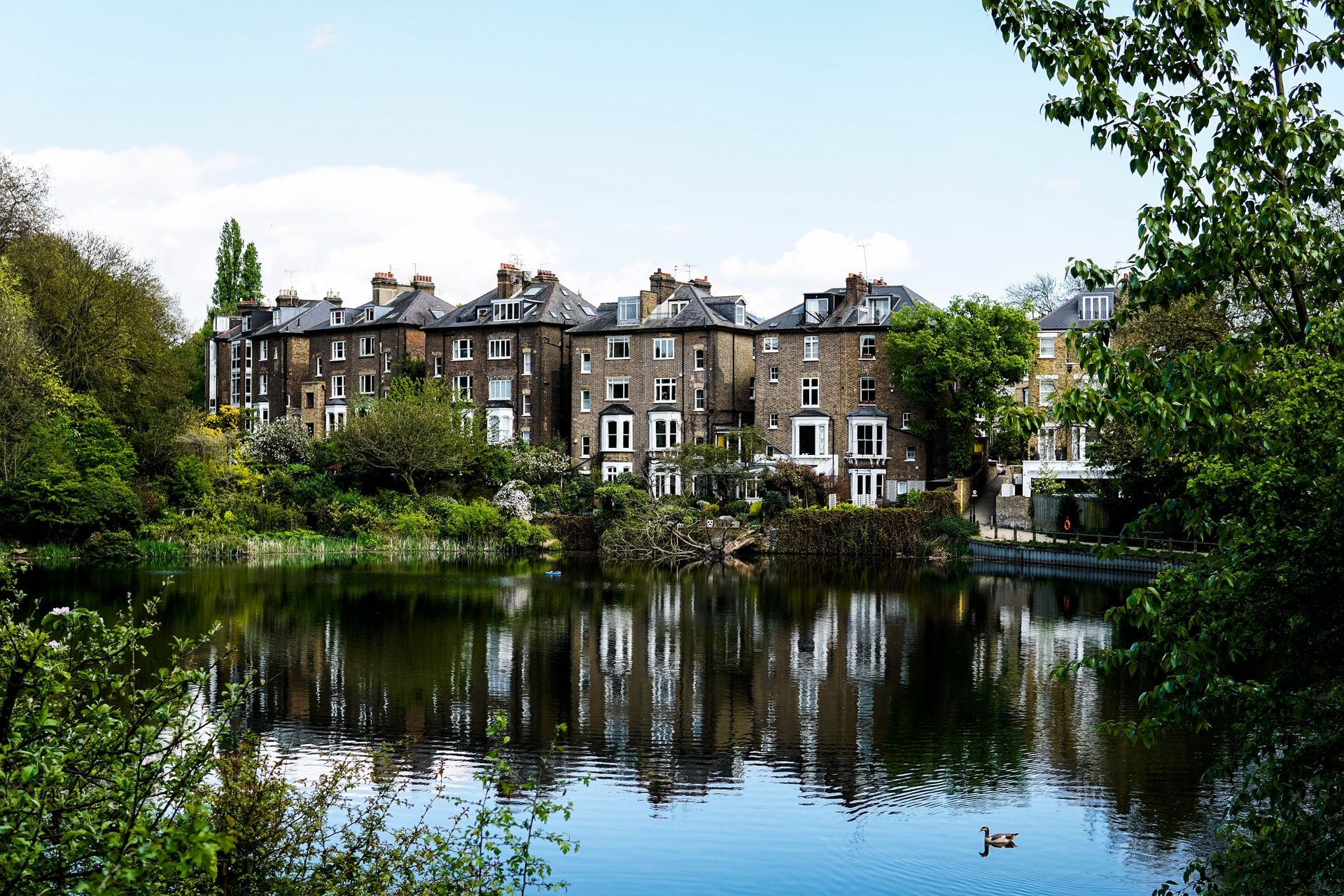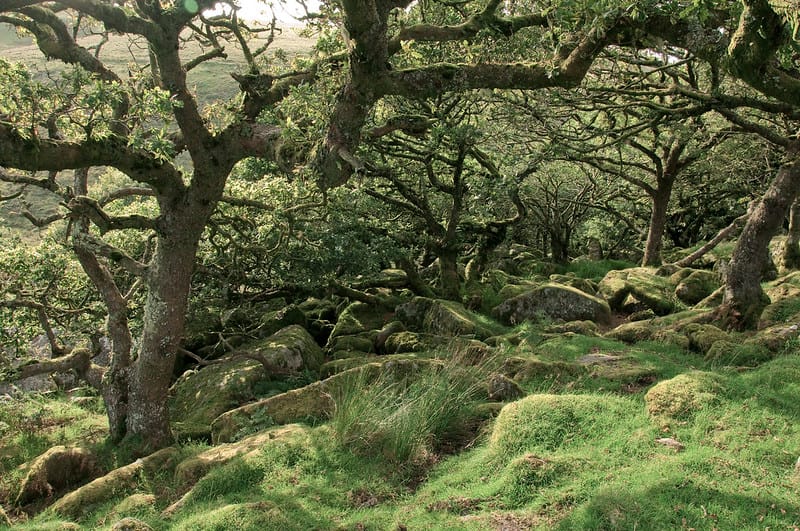
Less than 15% of councils have declared an Ecological Emergency. Why the delay?
In comparison, 83% of county and unitary authorities have declared a Climate Emergency.
This investigation is the third in a three-part series looking at how local authorities across England are dealing with the nature crisis. The first in the series focused on rewilding, and the second investigated how councils are managing their road verges.
To support our independent journalism, join up as a paying subscriber. This week, members have exclusive access to a package of resources about the Ecological Emergency, including a detailed round-up of actions, links to key documents, and media coverage.
The environmental crisis is not singular but plural. Britain, like the rest of the world, faces two crises: the rise in temperatures and the decline of nature.
These problems are inextricably entwined, each exacerbating – and offering potential solutions – to the other. But local authorities appear to have been slow to realise this fact.
While over two-thirds of English councils have declared a Climate Emergency, an investigation by Inkcap Journal finds that less than 15% have declared an Ecological Emergency.
For the past six months, we’ve been investigating these declarations and what they mean in practice: the actions taken, the money pledged, and the impacts on decision-making. This is what we found.
What is an Emergency Declaration?
The climate emergency witnessed an unprecedented level of attention in 2019. Mass protests and school strikes, among other things, led hundreds of local authorities to declare a Climate Emergency: a pledge to reduce their own emissions and to help others in their area do the same.
Despite a rising awareness of the nature crisis, this has yet to be translated into council policy in the same way. While 123 of 149 county and unitary authorities have declared a climate emergency, only 22 have declared some form of ecological emergency.
On 13th December 2018, Brighton and Hove became the first council to declare a climate and biodiversity emergency. Bristol was the first council in the UK to specifically declare an ecological emergency, with a standalone declaration passed in February 2020.
More than half of the councils to declared an Ecological Emergency were run by Labour or a Labour minority, while just 22% were run by the Conservatives or a Conservative minority.
The form of declaration varies by council – some councils have declared a “Biodiversity Emergency” or an “Environment Emergency” – yet they all function in a similar way, stating the council’s intention to take leadership in combating threats to the ecosystem.
“An Ecological Emergency has been declared by the council in response to the ongoing threat to wildlife and ecosystems. The declaration recognises the essential role nature plays in society and the economy and provides a statement of intent to protect wildlife and habitats, enabling residents to benefit from a green, nature rich environment.”
– Bath and North East Somerset Council
The process begins when a councillor brings a motion to the council, which councillors can choose to pass or reject, with a majority required for the motion to succeed.
Some councils have issued declarations that address the climate and ecological emergencies simultaneously. These include Cambridgeshire, Bournemouth, Christchurch & Poole, Windsor & Maidenhead, Brent and Ealing. Other councils, such as Herefordshire, Dorset, Bath & North East Somerset and Bristol, added a declaration of ecological emergency to their initial climate declarations.
Councillor Elissa Swinglehurst, who seconded the Ecological Emergency declaration in Herefordshire, explained that the ecological emergency had been implicit in its earlier climate declaration, but the secondary ecological emergency declaration “sought to raise awareness and encourage people to be considerate of the natural world: such an approach needed to be incorporated in the processes and policies at the council.”
The following graphic shows which councils have passed Ecological Emergency declarations to date.
Why so few declarations?
The small number of councils to declare an Ecological Emergency may appear discouraging, but it’s worth remembering that the movement has gained traction at other levels of government, and beyond.
While our analysis focuses on county and unitary authorities, a lot of work has happened at the level of district, city, town and parish councils across England. Uttlesford District declared an ecological emergency in July 2019, for instance, while South Oxfordshire stepped up in February of this year.
Non-political institutions have also embraced the movement: the Royal College of Psychiatrists, for instance, declared a Climate and Ecological Emergency in May, citing the mental health impacts of environmental breakdown.
There is also an effort to get the national government on board. The Climate and Ecological Emergency Bill, drafted by a group of scientists, legal experts, ecological economists and environmentalists, was initially presented to Parliament in September 2020. Since then, it has gathered the support of over 100 MPs across eight political parties – although, notably, none from the Conservatives.
Even so, it is clear that the ecological emergency has received nowhere near the level of attention of the climate emergency. Yet the science is clear: the climate and ecology crises are intertwined, and to solve one we must also fix the other. So why is this not reflected in council declarations?

Sarah Lunnon, coordinator of the CEE Bill, believes that the ecological emergency is simply not a public priority in the same way as the climate emergency. “I think for some councillors, it's really hard to know what to do,” she says.
For one thing, it is difficult to measure. While there are obvious metrics for tracking action on climate change, such as tonnes of CO2 emitted, there is no set measurement for the loss of biodiversity and ecosystem damage. This makes it difficult to define the ecological crisis in the first place, says Lunnon, let alone quantify it in a consistent manner across a nation of such diverse and varied habitats. Meanwhile, it can be difficult to conceptualise how the crisis will impact our own lives.
The issue has certainly caused contention in some councils. Some motions have come close to the wire: in Sutton, there were just 22 votes in favour, 20 votes against, and three abstentions. Others have not passed at all. Earlier this year, Torridge District council rejected a double declaration, criticising the motion as “wishy washy”.
Sheffield also rejected a petition to declare an ecological emergency, with the cabinet member for the environment suggesting that the “rush to be seen to do something, anything… would actually do more harm than good.” In the absence of a council declaration, a coalition of concerned groups in Sheffield (including Sheffield and Rotherham Wildlife Trust, Sheffield Green Parents, and the Diocese of Sheffield) came together last month to declare a nature emergency themselves.
Areas of action
The declarations state the councils’ intentions to curb ecological destruction and turn the tide for wildlife, but do the declarations directly result in actions beneficial to biodiversity? Or are they simply rhetoric: at best, an expression of support for changing behaviours; at worst, a case of knee-jerk greenwashing?
Many councils have built on their declarations with subsequent action plans and strategies, outlining how they will proceed after their announcements. Some councils have proactively sought to include both public and expert opinions; in London, Brent and Camden Boroughs held citizens’ assemblies prior to their declarations to help shape the councils’ approaches. Elsewhere, Ed Miliband chairs Doncaster’s Commission on the Climate and Biodiversity Emergency, which was established to set targets and actions after the council’s emergency declaration.
Council declarations invariably return to a number of key policies. These include tree-planting; increased connection between green space; a variety of rewilding or restoration projects (many of which were covered by Inkcap Journal’s features on rewilding and road verges); and a strategic centring of environmental concerns within council decision-making and policy.
Several councils are already implementing actions as a result of their declarations. Here is a list of some advanced projects:
- Bournemouth, Christchurch & Poole has promised to develop a Green Infrastructure Strategy to renew their approach towards parks and green spaces. They have since undertaken over 300 site audits and appointed a GIS Officer to consolidate mapping data. The draft strategy will be published this summer.
- Bristol has created a new post in their cabinet for Climate, Ecology and Sustainable Growth, with councillor Afzal Shah taking up the role.
- Dorset Council has partnered with an environmental organisation to purchase land. This is to boost biodiversity and provide baseline data for carbon sequestration on rewilded farmland. They have also produced a farm tenancy guide to help make county farm estates more environmentally friendly.
- Sutton Borough is currently identifying locations where biodiversity-friendly approach to maintenance can be trialled: to date, 12 sites have been identified.
Each council is at a different stage within its plans, owing to their varying dates of declaration and also to the impact of the pandemic. To give a fuller picture of what is happening behind the scenes, here is a summary of some key commitments, plans and aims from declared councils, which are yet to be implemented:
- Brent plans to develop a Green Infrastructure Vision, which will include plans to green existing council buildings, rewild unused pockets of land, create green travel corridors and rain gardens, further expand the bee corridor, and develop partnerships for community planting and food growing.
- Dorset plans to work with partners to connect fragmented habitats across the county, promote ecologically friendly gardens to residents, and to create wildflower, hedgerow and woodland planting zones on council land.
- North Somerset’s declaration resolved to promote local produce and reduce the intensity of agriculture through engagement with business and farmers, as well as to become a pesticide-free council. Their Green Infrastructure Action Plan, published in April to “support the council’s declaration of climate and nature emergency”, also outlines aims to rewild as much council land as possible.
- Bristol wants to double the amount of city land managed for the benefit of wildlife. It plans to reduce the use of pesticides by at least 50%, and to ensure all waterways are clean enough to support healthy wildlife, by 2030. Their next steps include conducting an analysis of Bristol’s ecological networks, and setting up a Bristol Wildlife Index to establish a baseline and track changes towards these targets.
Many councils’ commitments involved plans for biodiversity net gain, with a notable focus on targets that go beyond the 10 percent gains required by the draft Environment Bill. Bath & NE Somerset Council plans to raise local net gain to 15 percent, and to promote the same attitude across the West of England. Wirral council went one step further by committing to a 20% net gain across all council land.
Councils are also keen to incorporate increased green space into their urban areas – even if that means they have to “think more imaginatively”, in the words of Bournemouth, Christchurch & Poole. Their draft Climate and Ecological Emergency Action Plan details their intentions to develop “native garden spaces” within formal parks and recreation grounds, for instance, and to encourage better practice in private gardens, including hedgehog corridors.
These actions, which we have outlined to a greater extent in a separate article, are only those which have resulted directly from ecological emergency declarations and their subsequent strategies or actions plans, as far as can be discerned.

But perhaps the most powerful effect of the declarations is in centering ecological concerns at the heart of council decision-making. This is harder to quantify than the number of trees planted or verges left unmown, but the people behind the declaration insist that it is more important than any single action.
Many of the declared councils, including Herefordshire, Dorset and Bristol, have explicitly incorporated ecological concerns into their corporate plans, core values and planning application process after making emergency declarations.
For instance, any decision taken by Herefordshire Council now requires an environmental impact assessment, and the council has also introduced new purchasing guidance which includes biodiversity and climate indicators. “These issues won’t be solved by one or two projects,” says Ben Boswell, head of environment at Herefordshire Council. “It needs to be part and parcel of how the council operates, and that’s what we’re currently trying to do.”
Ironically, emergency declarations have the smallest impacts in councils with a long-term record of positive environmental action, since many initiatives will already be underway.
For example, Cambridgeshire was among the first councils to declare an ecological emergency. However, their subsequent Strategy and Action Plan details much work which was already underway prior to their emergency declaration, including restoring and creating natural habitats, proactively managing rural estates for better biodiversity, and working with the scientific community to preserve and restore peatland areas.
Funding
The allocation of additional funding is a good indication of whether a council is taking its Ecological Emergency declaration seriously. Are they prepared to fund their good intentions, or does the environment remain an afterthought?
The cash is not always easy to track: the funding for many of these actions has been integrated into general council budgets, which makes it difficult to determine exactly how much money is being spent on protecting and enhancing ecology and biodiversity alone.
However, some projects and headlines are able to delineate funding numbers, as outlined below:
- Bristol Council has committed £4m of funding to their three-year Climate and Ecological Emergency Programme.
- Cambridgeshire’s Environment Fund (much of which is targeted at climate mitigation) includes £300,000 for supporting capital projects, which can be used to support ecological improvements.
- Herefordshire Council has allocated around £25,000 to deliver biodiversity net gain as part of a new highway maintenance project. Furthermore, they have set up a new climate reserve to fund both climate and ecological projects, with £250,000 approved in 2021.
- Sutton Borough has budgeted £4,000 towards butterfly banks and £11,000 to fund meadow creation work, as outlined in their environment emergency progress report. Funding has also been secured to appoint an officer focusing on biodiversity net gain.
- Bournemouth, Christchurch & Pool has committed funds towards a new natural burial site.
Tree planting, for better or worse
Common to almost every council declaration is the intention to plant more trees. Such initiatives have almost become synonymous with climate action, and have proven popular among citizens. Here are some of the actions and commitments that councils have taken as a result of their declarations:
- Doncaster’s Climate and Biodiversity Emergency Commission has recommended that the council develop a range of tree-planting initiatives, with the aim of increasing tree canopy cover from 12.6 percent to at least 17 percent. These will be based on an assessment of the borough’s natural capital assets, and ensure that tree-planting projects compliment other biodiversity requirements.
- Sutton aims to plant 2,000 trees per year. They also plan to publish guidance for developers and residents when planting trees.
- Ealing’s Emergency Strategy includes targets to increase canopy cover from 16.9 percent to 23 percent by 2030, and to plant at least 40,000 trees in parks, open spaces and on housing estates. They also plan to launch a tree warden scheme, run a tree sponsorship scheme, and explore the potential for pocket parks in 2022.
- Bournemouth, Christchurch & Poole has committed to triple its rate of tree-planting to at least 30,000 hectares per year. It also plans to investigate the allocation of land to allow natural woodland generation.
- Wirral’s Emergency Policy Statement commits the council to planting over 20,000 trees by 2030.
However, some councils have emphasised that true ecological progress cannot always be measured by the number of new trees.
Dorset has recently changed its tree policy: instead of being a like-for-like replacement, their new ‘two for one’ policy mandates that for every tree felled, two will be planted.
But the subject is emotive, and has not always been well understood. According to Matt Reeks, the council’s service manager for coast and greenspace, actually finding the space to plant so many trees has been difficult. The county contains acid grassland, chalk grassland, lowland health and ancient woodlands – and, between them, they do not leave much space for thousands of trees to be planted.
Forestry England, for instance, has recently come under fire for replanting pine trees on an area of Dorset heathland. But Dorset Council has had to deal with the repercussions of doing the opposite: not long after it declared a climate emergency, they received a grant from Defra to fell 11,000 trees on heathland habitat.
“On the one hand, the council is doing press releases about the climate change strikes and how we’re going to help save the planet. But at the same time, we’re also cutting down 11,000 trees because heathland is really important,” says Reeks. “It’s quite a head scratch.”
Holding power to account
In addition to spurring action, Ecological Emergency declarations have led to another indirect consequence: they have enabled the public to better hold their local council to account, and to call out any gaps between publicly stated intentions and actions.
There are numerous examples of this happening. Following a successful effort to save a veteran oak tree in Bristol, one Green Party councillor said that the “campaign never should have been necessary” given the city’s declaration.
While I am incredibly relieved to hear that the Ashley Down Oak will be saved, I’m concerned that residents and campaigners were completely left out of the process. Why were our emails to @CllrAfzalShah ignored when over 2000 concerned people signed our petition?
— Lily Fitzgibbon (@lilyfitzg2) May 11, 2021
Earlier this year, Warren Draper, the Green Party’s mayoral candidate for Doncaster, wrote a scathing blog in which he criticised the council’s lack of action since its ecological emergency declaration:
“If DMBC are serious about declaring an emergency, they need to act like there is an emergency. We don’t want to portray DMBC as the villain here; it is a huge organisation which will take some time to make the vital adjustments we need to create a greener, healthier, fairer, more sustainable and more resilient world. But this does not mean that we will not hold them to account and remind them of their duties in light of the Climate and Biodiversity Emergency.”
Past experience shows that the impact of declarations can extend beyond the immediate locale of the authorities in question.
Local action can also lead to political ripples at Westminster. Two years ago, climate activism at the level of local councils helped to pass the 2050 net-zero target, says Lunnon. “I'm not sure that would have happened without all of those councils declaring a climate emergency.”
If as many councils passed ecological emergency declarations, it could help to embed the natural world at the heart of central government policymaking, alongside the climate crisis.
If we are to have any hope of reversing the unfolding natural crisis, it is critical that we tackle ecological loss at every level. By ignoring the natural world, councils do a disservice to their efforts to tackle climate change. This is an emergency on all fronts.
Inkcap is 100% reader-funded. If you value independent environmental journalism, please consider supporting Inkcap by becoming a paid subscriber.
Subscribe to our newsletter
Members receive our premium weekly digest of nature news from across Britain.
Comments
Sign in or become a Inkcap Journal member to join the conversation.
Just enter your email below to get a log in link.








